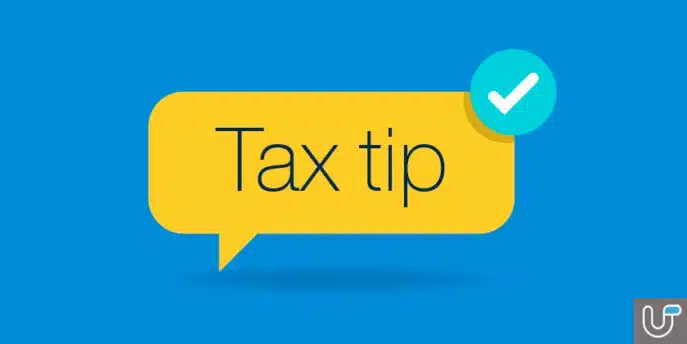Business Lead Generation: All Loyal Clients Start as Potential Customers or Leads for Continuous Growth of Your Business
Building an effective lead generation campaign is crucial for driving sales and growing your business. But the competitive market we have today means attracting leads, and eventually converting them into loyal customers, is becoming increasingly challenging.
The key lies in a strategic and well-planned approach to lead generation. With a robust strategy, businesses can capitalise on valuable opportunities. Not to mention stay ahead of their competitors.
Lead generation important for business growth, as it helps capture potential customer information early, manage the sales cycle efficiently, and maintain a competitive edge in the market.
In this article, we’ll walk you through the six essential steps to creating a successful lead generation campaign. This approach will provide a solid foundation for your success.
More importantly, it can lead to sustainable growth in your business.
Introduction: The Journey from Lead to Loyal Client
Lead generation is the lifeblood of business growth, enabling companies to attract potential customers and guide them through the journey to becoming loyal clients. This process is more than just collecting names and emails—it’s about strategically identifying your target audience, capturing their interest, and nurturing them until they’re ready to make a purchase. Effective lead generation strategies, such as inbound lead generation and outbound lead generation, empower businesses to quickly generate leads and fuel their sales efforts. By leveraging the best lead generation tools and techniques, companies can focus on capturing high quality leads that are more likely to convert, ensuring sustainable growth. Whether you’re just starting out or looking to scale, mastering the art of generating leads is essential for reaching your sales targets and building lasting customer relationships.
Step #1: Identify Your Target Audience
The first and most critical step in any successful lead generation strategy is identifying your target audience. Understanding who your potential customers are—what they need, what challenges they face, and what motivates their decisions—lays the groundwork for all your marketing efforts. Start by conducting thorough market research to uncover the demographics, interests, and pain points of your ideal clients. Use this data to create detailed buyer personas that guide your targeted marketing campaigns.
For example, if your business offers marketing services, you can use Google Ads to reach potential customers actively searching for solutions you provide. By focusing your efforts on the right audience, you not only increase your conversion rates but also generate more leads that are likely to become high quality leads. Implementing lead scoring and lead qualification processes ensures your sales teams are prioritizing the most promising prospects, maximizing the impact of your lead generation strategy. Ultimately, knowing your target audience allows you to craft messages that resonate, address their pain points, and drive meaningful engagement.
The 6 Steps
Step #1: Identify Your Target Audience
The foundation of any successful lead generation campaign is understanding who your ideal customers are. Identifying your target audience allows you to tailor your messaging and strategies to attract the right leads and focus on attracting potential customers.
In this step, you need to create detailed buyer personas. This involves outlining the demographics, interests, and pain points of your ideal customers.
Then, conduct market research to gather insights about your audience. Use surveys, interviews, and data analysis to get key information. Then, segment your audience into smaller groups based on their common characteristics. This helps you identify and target prospective customers more effectively, ensuring your outreach is directed at those most likely to convert.
Remember, the more you know about your target audience, the more you can craft compelling content that resonates with them. And this, ultimately, increases your chances of conversion.
Step #2: Develop Compelling Lead Magnets
To draw leads in, consider offering valuable content that provides useful information or solutions. We’re talking about things like eBooks, whitepapers, webinars, and free trials. But take note that these lead magnets need to be compelling enough to attract the right people. Lead magnets are specifically designed to capture leads by encouraging visitors to share their contact information in exchange for valuable resources.
So, what exactly makes a lead magnet compelling?
Well, for starters, it should address a pressing pain or problem for your target audience. Also, keep in mind that it needs to set the stage for further positive engagement with your leads. So, at the very least, it should pave the way for potential clients to end up on your landing page.
Moreover, any marketing efforts you make in promoting your lead magnet must have a clear and easy-to-follow call to action (CTA). It needs to make the audience take action, such as downloading a resource or signing up for a webinar.
Step #3: Design an Effective Landing Page
Your landing page is where website visitors will first interact with your offer. It has a single goal of capturing leads. That’s why it should be designed to convert your website’s visitors into leads for your business.
To this end, provide all the necessary information on your landing page. Use strong headlines and supportive visuals to grab attention and convey your message effectively. Landing pages and forms are essential tools to collect leads from website visitors, making it easy to gather contact information for follow-up and conversion.
More importantly, your landing page must encourage site visitors to do a particular action. It should easily guide site visitors towards taking the next step. To make all that happen, your CTA must stand out.
Remember, an effective landing page significantly increases your chances of capturing valuable leads.
Step #4: Master the Art of Lead Capture
Capturing leads effectively is a cornerstone of any robust lead generation strategy. To entice potential customers to share their contact information, businesses need to offer irresistible lead magnets—think e-books, webinars, or free trials—that provide real value. These offers should be promoted through well-designed landing pages and lead capture forms that make it easy for visitors to take the next step.
Utilizing the right lead generation tools, such as marketing automation software and lead gen tools, can streamline the process of collecting and managing lead data. Lead generation agencies can also offer expert support in designing and executing lead capture strategies tailored to your business needs. For instance, if your company hosts virtual events, you can use event marketing to attract attendees and follow up with them through targeted email marketing campaigns, turning event participants into qualified leads.
By mastering lead capture, you ensure that your sales efforts are focused on nurturing leads who have already shown interest in your offerings. This not only helps you generate more leads but also improves the efficiency and effectiveness of your overall lead generation system.
Step #4: Promote Your Campaign
Promotion is key to driving traffic to your landing page and reaching your target audience. So, utilise multiple marketing channels such as email marketing, social media, pay-per-click (PPC) ads, paid advertising, and content marketing.
Additionally, leverage an effective SEO strategy to optimise your content for search engines. Having a strong SEO strategy can increase organic traffic to your landing page. You could also partner with industry influencers to expand your reach.
In any case, cross-channel promotions ensure that your marketing campaign reaches a wider audience. This, in turn, can potentially boost lead generation for your business.
Step #5: Nurture Your Leads
The reality is that not all leads will convert immediately.
This is why lead nurturing is essential. Guide potential clients through your marketing funnel—also known as the lead generation funnel—which includes stages such as attracting potential leads at the top, nurturing them in the middle, and converting them into customers at the bottom. Understanding each phase helps you apply the right strategies and content to move leads forward. Do it right and it will lead to a higher conversion rate.
One of the most effective ways to nurture leads is to implement email drip campaigns.
Send a series of automated emails that provide valuable content. But make sure to tailor all your content to the specific interests and behaviours of your leads to keep them engaged. As you monitor engagement, identify when a lead becomes a marketing qualified lead (MQL)—someone who has shown enough interest, such as downloading resources or attending events, to be considered ready for further sales attention. Doing so will gradually move those leads towards a purchase decision in your favour.
Finally, regularly follow up with leads. Answer their questions, provide additional information, and maintain their interest through regular engagement.
Effective lead nurturing builds trust and keeps your business top-of-mind. This then increases the likelihood of converting your leads to customers over time by ensuring they become a qualified lead ready for sales engagement.
Step #6: Measure and Optimise
Crucial for long-term success is the continuous measurement and optimisation of your lead generation campaigns. It will allow you to evaluate the performance of your campaign and adjust to get the best returns on your investment. Regularly measuring and optimizing your lead generation efforts helps you identify which strategies are most effective and where improvements can be made.
So, track all your key metrics, like conversion rates, click-through rates, and cost per lead. Implement lead management systems or processes to organize, track, and nurture your leads efficiently throughout the funnel.
You also need to determine what’s working and what’s not. Conduct A/B testing to test different elements of your campaign, such as headlines, CTAs, and visuals. Then, use these key data insights to make informed adjustments and improve the effectiveness of your campaign.
By measuring and optimising your campaign, you can ensure that it remains effective and continues to generate high-quality leads. Improving lead quality through these optimization efforts increases the likelihood of converting prospects into customers.
Invest in Your Lead Generation Campaign
Ultimately, a successful lead generation campaign that boosts your conversion rate and leads to business growth involves a strategic approach. This approach involves really knowing your target audience and ensuring your offer and marketing campaign revolves around them.
But it doesn’t stop there.
To get a continuous influx of leads in your business, you need to continuously measure and optimise your efforts. There’s no magic pill to customer acquisition, so find out the most effective ways to bring more leads into your business.
However, we know that implementing these strategies often requires a significant financial investment.
For instance, you might have to hire an entire team to handle your lead generation process. You could also outsource it, or invest in upskill training to ensure that your team can handle your lead generation in-house. Supporting your sales team with lead generation services, lead generators, and technology can help attract, manage, and convert business leads and sales leads more efficiently. Perhaps you’ll also need to invest in technology and tools such as lead generation software, a lead generation tool, an all in one tool, or a lead gen tool to manage your sales pipeline, track leads generated, and streamline your sales process. Filtering out irrelevant leads is crucial to ensure your sales team focuses on qualified prospects and maximises conversion rates. Account based marketing and B2B lead generation are especially important for targeting high-value clients and building a strong pipeline of new leads. The primary difference between inbound and outbound lead generation strategies lies in whether you attract prospects to your content or reach out directly, which can significantly impact your sales process and approach to customer acquisition. Tracking the number of leads generated, acquiring new leads, and managing your sales pipeline and sales process are all essential for sustained business growth. Integrated lead generation tools and services also enhance customer relations by enabling better lead nurturing and engagement.
In any case, Unsecured Finance Australia is here to help. Apply for a loan online and you can receive your approval within 24 hours.
Find out more by taking a look at our unsecured business loans.




